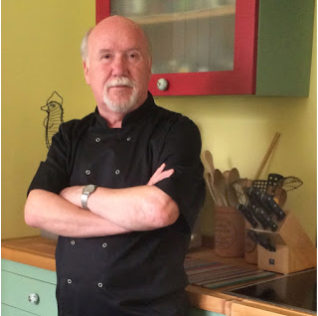Fabada Asturiana
The Recycled Cook
By Adrian Sleeman
Fabada Asturiana
 This is a rustic bean casserole that originated in the Asturia region of Northern Spain. It gets its name from Fava beans that are traditionally used to create this dish although you can use any large white bean.
This is a rustic bean casserole that originated in the Asturia region of Northern Spain. It gets its name from Fava beans that are traditionally used to create this dish although you can use any large white bean.I prefer to use Butter beans as they give a rich creaminess to the dish. If you can find the Spanish variety, usually sold in large glass jars, they are amazing otherwise just use a tin from your supermarket. If you want to be authentic and have patience soak dried beans overnight, personally I don't see the difference.
Like all stews there is no fixed recipe and as this is a blog which focuses on using leftover food to create tasty, cost effective dishes it is good to use what you have already got in your fridge. The base of this dish is ham in its various forms, Ham hock, Chorizo, Black pudding (Morzilla) and even bacon if you want.
 |
| Home made Fabada |
If you are using dried beans you will need to soak these they day before or overnight and they can be added to the stew early on. If you are using pre-cooked tins or jars don't add the beans until the very end of the cooking process otherwise they will turn to mush (particularly true with butter beans).
Whatever joint of meat you are using, Ham hock, Pork knuckle or even your leftover Sunday joint, cover with water in a large saucepan, add some peeled and quartered onions, diced carrots and a whole garlic bulb sliced in half (optional).
 |
| By Juan J. Martínez from Valencia, España (Fabada) |
The Spanish will add cooking Chorizo and Morzilla, both in their skins half way through the cooking. If you are using sliced Chorizo that can be added at any time but do not add sliced black pudding until the very end or it will break up and dirty the water.
If you do choose to use sliced black pudding, sear it in a hot dry pan and add it to the Fabada just before serving, which is what I have done in my version.
Like a lot of my dishes, there are no defined rules for this dish, cooking times and ingredients are dependant on what you have available. You can add Red Peppers, Celery, and a variety of herbs such as Parsley, Coriander, Chives and Thyme. Experiment but above all enjoy.
I tend not to provide specific measurements to these dishes as there are so many variables of quantity and ingredients it would be impossible to cover them all. My advice is to keep tasting as you go and add seasoning gradually to taste.
Serve with crusty bread and some nice dry Cider, the Asturian preferred drink.



Comments
Post a Comment